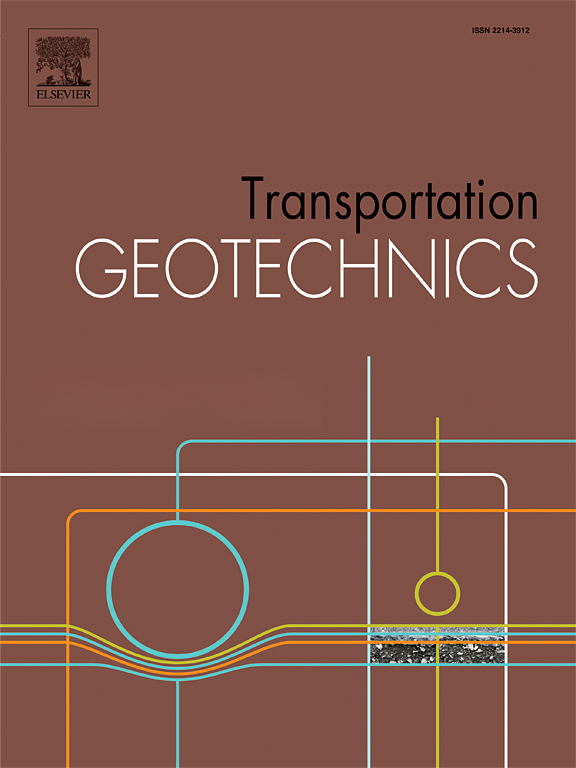未铺路面搓板现象的理论建模
IF 4.9
2区 工程技术
Q1 ENGINEERING, CIVIL
引用次数: 0
摘要
搓板,或波纹,是土质变形在未铺设的道路上的常见现象。由于车辆的速度和质量,在颗粒状材料道路上出现波动。这项工作提出了一个理论模型,用于分析未铺设道路上的搓衣板现象,该模型允许计算土壤的永久位移和车轮通过时产生的力。该模型采用了基于Wolf理论的动态平衡模型、土壤承载力模型和宏观元模型。通过对比实验测量的圆形沙质路径上的变形和力与仪器车轮的对比,验证了该模型的正确性。还进行了参数分析,以了解与搓板现象密切相关的变量。着重分析了土体力学性质和车轮速度对土体永久位移和接触力的影响。结果表明,波动在一定的临界速度下开始形成。分析还表明,粘聚力比摩擦角在减少路面波纹方面更重要。本文章由计算机程序翻译,如有差异,请以英文原文为准。
Theoretical modelling of the washboard phenomenon on unpaved roads
Washboard, or corrugation, is a common phenomenon of soil deformation on unpaved roads. Undulations appear on granular material roads due to the velocity and mass of the vehicles. This work proposes a theoretical model for analysing the washboard phenomenon on unpaved roads that allows computing the soil’s permanent displacements and the forces produced by the passage of a wheel. The model uses the dynamic equilibrium, soil-bearing capacity, and macro element models based on the theory proposed by Wolf. This model was validated by comparing experimentally measured deformations and forces on a circular sandy path with an instrumented rotating wheel. A parametrical analysis was also conducted to understand the variables strongly related to the washboard phenomenon. This analysis focuses on the effect of the mechanical soil properties and the wheel velocity on the soil’s permanent displacement and contact forces. The results suggest that undulations start to form at a certain critical speed. The analysis also shows that cohesion, more than friction angle, could be important in reducing road corrugation.
求助全文
通过发布文献求助,成功后即可免费获取论文全文。
去求助
来源期刊

Transportation Geotechnics
Social Sciences-Transportation
CiteScore
8.10
自引率
11.30%
发文量
194
审稿时长
51 days
期刊介绍:
Transportation Geotechnics is a journal dedicated to publishing high-quality, theoretical, and applied papers that cover all facets of geotechnics for transportation infrastructure such as roads, highways, railways, underground railways, airfields, and waterways. The journal places a special emphasis on case studies that present original work relevant to the sustainable construction of transportation infrastructure. The scope of topics it addresses includes the geotechnical properties of geomaterials for sustainable and rational design and construction, the behavior of compacted and stabilized geomaterials, the use of geosynthetics and reinforcement in constructed layers and interlayers, ground improvement and slope stability for transportation infrastructures, compaction technology and management, maintenance technology, the impact of climate, embankments for highways and high-speed trains, transition zones, dredging, underwater geotechnics for infrastructure purposes, and the modeling of multi-layered structures and supporting ground under dynamic and repeated loads.
 求助内容:
求助内容: 应助结果提醒方式:
应助结果提醒方式:


